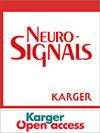葡萄膜黑色素瘤的治疗耐药性与失败
Q1 Medicine
引用次数: 0
摘要
葡萄膜黑色素瘤(UM)是一种常见的眼内恶性肿瘤,目前缺乏标准的治疗方法。传统的手术方法可能导致患者失去器官或进行困难的手术,从而导致术后结果不佳。无论哪种方式,与放疗相比,手术后患者的生活质量都没有改善。作为放射治疗的一线治疗,这种治疗受到肿瘤大小和位置的限制。术后视力下降和第二次眼球摘除手术的风险仍然存在。UM是一种特殊类型的黑色素瘤,对化疗具有耐药性,尽管治疗无效,但对该主题的研究表明,UM的治疗有新的思路——免疫疗法和靶向治疗。目前的nivolumab加ipilimumab治疗方案取得了相对成功的结果,有一些非常令人鼓舞的病例报告,但不如它们在皮肤癌症中的疗效。尽管这些新疗法目前的结果不令人满意,但它仍然是高度转移且预后极差的UM最有吸引力的答案。这篇综述通过汇编目前临床上常见治疗方法的优缺点,支持临床决策和新治疗方法的开发。本文章由计算机程序翻译,如有差异,请以英文原文为准。
Therapy Resistance and Failure in Uveal Melanoma
Uveal Melanoma (UM), a common malignant intraocular tumor, is currently lacking a standard therapy. Traditional surgical approaches can result in patients losing organs or having difficult surgical procedures resulting in poor postoperative outcomes. Either way, there is no improvement in patients’ quality of life after surgery compared to radiotherapy. As a first-line treatment with radiotherapy, this therapy is limited by the size and location of the tumor. The risk of postoperative vision loss and second surgery for enucleation remains. UM is a special type of melanoma that is resistant to chemotherapy, and although the treatment is not effective, research has been investigated on this topic, suggesting new ideas for the treatment of UM - immunotherapy and targeted therapy. The current nivolumab plus ipilimumab treatment regimen has yielded relatively successful results, with some very encouraging case reports, but not as good as their efficacy in skin cancer. Despite the current unsatisfactory results of these new therapies, it is still the most attractive answer for UM that is highly metastatic and has a very poor prognosis. This review supports clinical decision-making and new treatment development by compiling the strengths and weaknesses of common treatments currently available in the clinic.
求助全文
通过发布文献求助,成功后即可免费获取论文全文。
去求助
来源期刊

Neurosignals
医学-神经科学
CiteScore
3.40
自引率
0.00%
发文量
3
审稿时长
>12 weeks
期刊介绍:
Neurosignals is an international journal dedicated to publishing original articles and reviews in the field of neuronal communication. Novel findings related to signaling molecules, channels and transporters, pathways and networks that are associated with development and function of the nervous system are welcome. The scope of the journal includes genetics, molecular biology, bioinformatics, (patho)physiology, (patho)biochemistry, pharmacology & toxicology, imaging and clinical neurology & psychiatry. Reported observations should significantly advance our understanding of neuronal signaling in health & disease and be presented in a format applicable to an interdisciplinary readership.
 求助内容:
求助内容: 应助结果提醒方式:
应助结果提醒方式:


